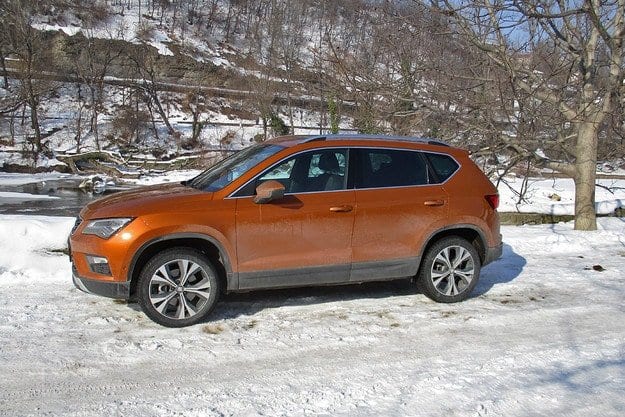
Test drive Audi TT RS
The main feature of the five-cylinder engine is its unusual sound. Deep, juicy, powerful - as if there are at least ten cylinders here. I do not want to turn off the engine categorically. By the way, it can be made even louder.
It turns out that the navigator with the voice of Vasily Utkin is not the first such experience of Yandex. On a test drive of the Audi TT RS in Madrid, colleagues told me that the company once produced maps, the route of which was voiced by Boris Schulmeister. So, all the time I was driving the new Audi sports car, I wanted the famous racer to sit in the passenger seat.
It's time for a come-out: I really love driving, I love fast cars, but I don't get excited about the track. Absolutely. Since this lesson is not inspiring, then it turns out for me very mediocre. But I still remember my best race in my life: it was the track to Myachkovo, and it was Boris who was in charge of me on the radio. With the new Audi TT RS, the love of motorsport is suddenly back.
Roadster and arguments
Russia is definitely not a country of convertibles. It is difficult to decide to buy such a car, especially for someone who is used to carefully weighing all the pros and cons. Then you will still have to answer numerous questions from friends like "Well, how many times in a year will you open the roof?"
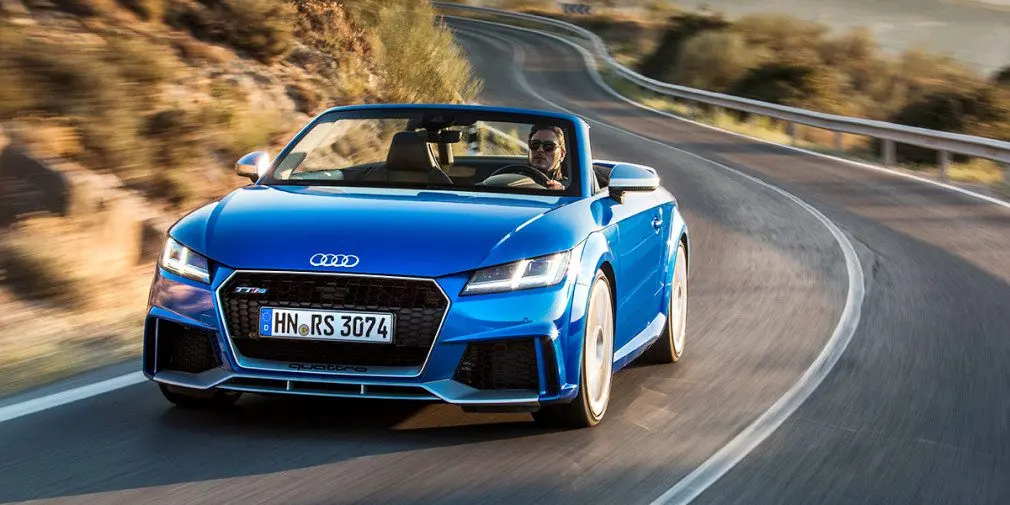
In the case of the TT RS, there is much more sense in a roadster and not in a coupe. You can simply answer with an impenetrable face: "I just like the weight distribution of the roadster better."
Indeed, it was the version without a roof on mountain serpentines that seemed more interesting. And it's not about the sun, which was warming while in Moscow they continued to prepare for the first snow, and not even about the fact that when you fold the top, the sound of the engine penetrates the cabin even more. This option has a less rigid body and indeed a slightly different weight distribution. As a result, the car slides less out of the bend at high speed.
By the way, this version of the chassis differs from the TT S version with springs, shock absorbers, anti-roll bars, and a support for the power unit. The rest is the same MQB platform, the same cross-section of the motor, the same McPherson struts in front.
"Five" from birth
For the new generation of TT RS, Audi has developed a new engine: the traditional five-cylinder engine for the model. Such, apart from the Germans from Ingolstadt, is now only made by Ford (3,2-liter diesel engines for the Ranger pickup). It is believed that engines with such a number of cylinders are not too balanced: to combat the vibrations caused by waves of inertial moments, special supports, counterweights and shafts are needed, which leads to additional costs.
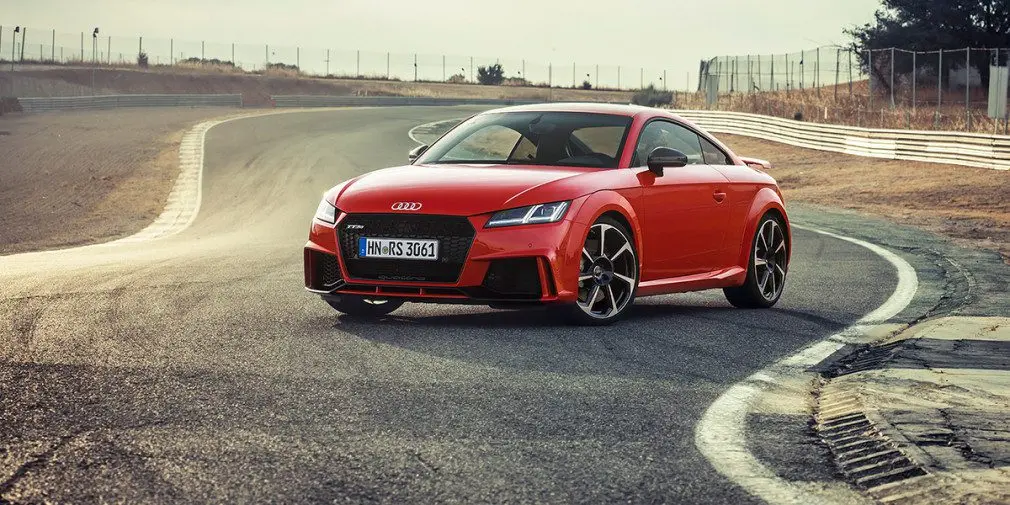
However, this did not prevent the 2,5-liter unit from winning the "Engine of the Year" seven times in a row in the category from 2,0 to 2,5 liters. In the new version of the engine, the Germans replaced the crankcase, installed an alloy cylinder block, a turbocharger and a more efficient intercooler, and equipped the engine with a combined fuel injection function. Its capacity is 400 liters. with., which is 40 hp. more than the fastest TT RS of the previous generation.
The output is a motor with an incredible range of thrust. From the very bottom to the 7200 rpm cutoff, a powerful pick-up is felt. As a result, it is equally comfortable to move in a stream or on an empty straight line. At almost any speed, the sports car accelerates in proportion to the force of pressing the gas pedal.
Another feature of the five-cylinder engine is its unusual sound. Deep, juicy, powerful - as if there are at least ten cylinders here. I do not want to turn off the engine categorically. By the way, it can be made even louder. Vehicles with the optional sports edition have a button with an image of the tailpipe. So, press it, and the TT RS "voice" adds a few more decibels.
Karting to scale
The novelty from Audi is an extremely assembled car, similar in control to the kart. Even after a serious mistake by the driver, the car enters the turn without drifting or slipping. Behind this is the meticulous work of security systems. The TT RS computer analyzes the information from the sensors, regulates the stiffness of the shock absorbers and the amount of torque transmitted to the front and rear wheels. The main thing is to keep the sports car initially prone to sliding of the front axle from this. At the entrance to the corner, it brakes the front wheel, which is located inside, and at the exit, both, while simultaneously transferring most of the moment to the wheels with better grip.
For this, however, you have to pay with overheated brakes and tires. Moreover, my pads began to smoke not on the track - on the mountain serpentine, which I drove twice in a row. Those who want to use the TT RS frequently in near extreme modes should pay extra for the optional carbon ceramic brakes. They are much more durable - the chance of overheating them is much lower.
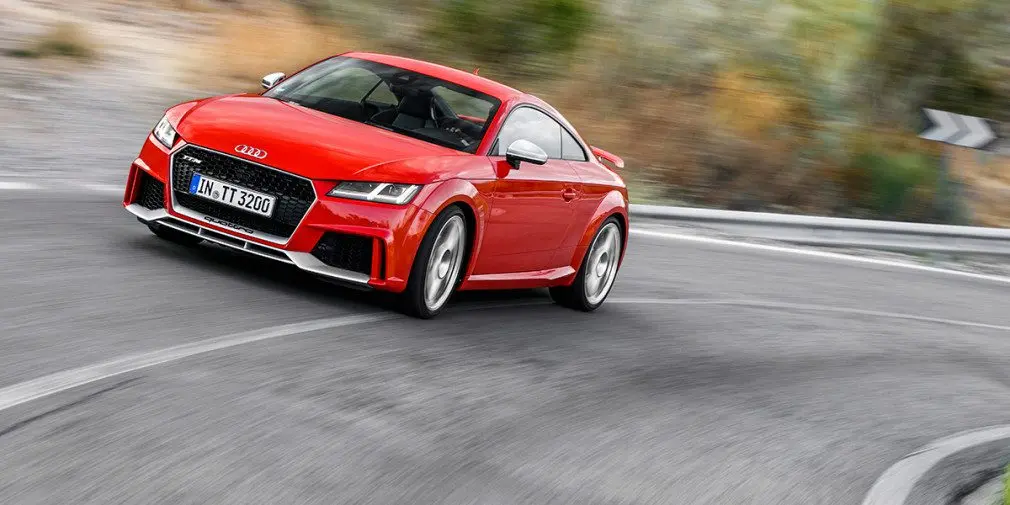
If you turn off ESP, the two-doors Audi get wilder only a little bit. They remain stable on the road, only allowing the driver a little drift that is easy to handle. However, on the Harama highway, where we went after the mountain roads, at some point it started to rain. In such conditions, the car requires more attention and much more concentration from the driver, as it can begin to slip when braking or cornering.
The downside of the sporty character is suspension comfort. She's very tough. So much so that even ordinary obstacles like speed bumps or small holes are torment for the driver and passengers. But the motorsport fan won't even notice.
Knockout at the start
The new Audi TT RS accelerates from 100 to 3,7 km/h in 2 seconds. The fastest BMW M370 (4,3 hp) does it in 45 s, the Mercedes-Benz A381 AMG (4,2 hp) in 300 s, and the most powerful Porsche Cayaman (4,9 hp) - in XNUMX seconds. The impressive dynamics of the TT RS is not only the merit of the motor, but also the seven-speed “robot”, which snaps off gears as imperceptibly as possible, and the all-wheel drive system based on the Haldex clutch. It does not overheat and very effectively distributes torque between the axles (in priority, of course, the rear wheels). By the way, the clutch activity, like the force on the steering wheel and the stiffness of the shock absorbers, can be changed in the car menu.
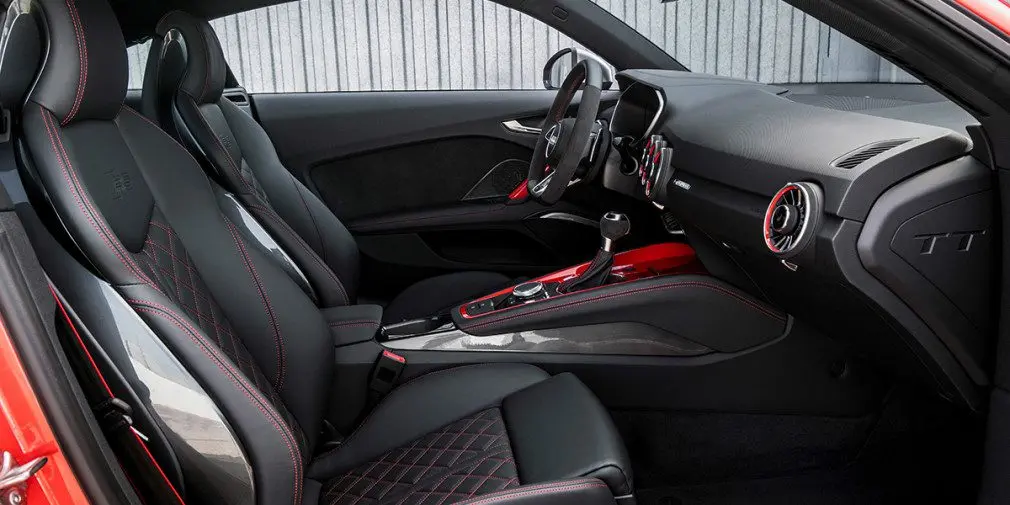
Launch control mode (literally translated as "launch control") is available in many modern cars. But Audi focused attention on it, highlighting a small area right on the Harama track next to the boxes, where everyone could try to jump off the spot.
You sit behind the wheel, squeeze both pedals all the way: the engine growls, the tachometer needle twitches, and suddenly the car takes off. Most of all, this feeling is probably like a knockout. An unexpected jerk - your eyes go dark, and when it passes, you find yourself in a completely different place.
Impressed by the set of pluses? Are you ready to buy such a car? Will not work. Russian buyers will have to wait until next summer. It seems to be logical, because this is still the best time for convertibles, but there is still no clarity about whether the roadster will reach us. As well as pricing information. In Germany, the cost of a coupe starts at 66 euros ($ 400), a roadster - from 58 euros ($ 780). In the meantime, you can try to find the source of the navigator with Boris Shultmeister and train, train, train.
| Audi TTRS Coupe | Audi TT RS Roadster | ||
| A type | Coupe | Roadster | |
| Dimensions (length / width / height), mm | 4191/1832/1344 | 4191/1832/1345 | |
| Wheelbase, mm | 2505 | 2505 | |
| Curb weight, kg | 1440 | 1530 | |
| engine's type | Turbocharged petrol | Turbocharged petrol | |
| Working volume, cubic meters cm. | 2480 | 2480 | |
| Max. power, h.p. (at rpm) | 400 (5850-7000) | 400 (5850-7000) | |
| Max. cool. moment, nm (at rpm) | 480 (1700-5850) | 480 (1700-5850) | |
| Drive type, transmission | Full, robotic 7-speed | Full, robotic 7-speed | |
| Max. speed km / h | 250 (280 with optional package) | 250 (280 with optional package) | |
| Acceleration from 0 to 100 km / h, s | 3,7 | 3,9 | |
| Fuel consumption, average, l / 100 km | 8,2 | 8,3 | |
| Price, $. | Not announced | Not announced |
